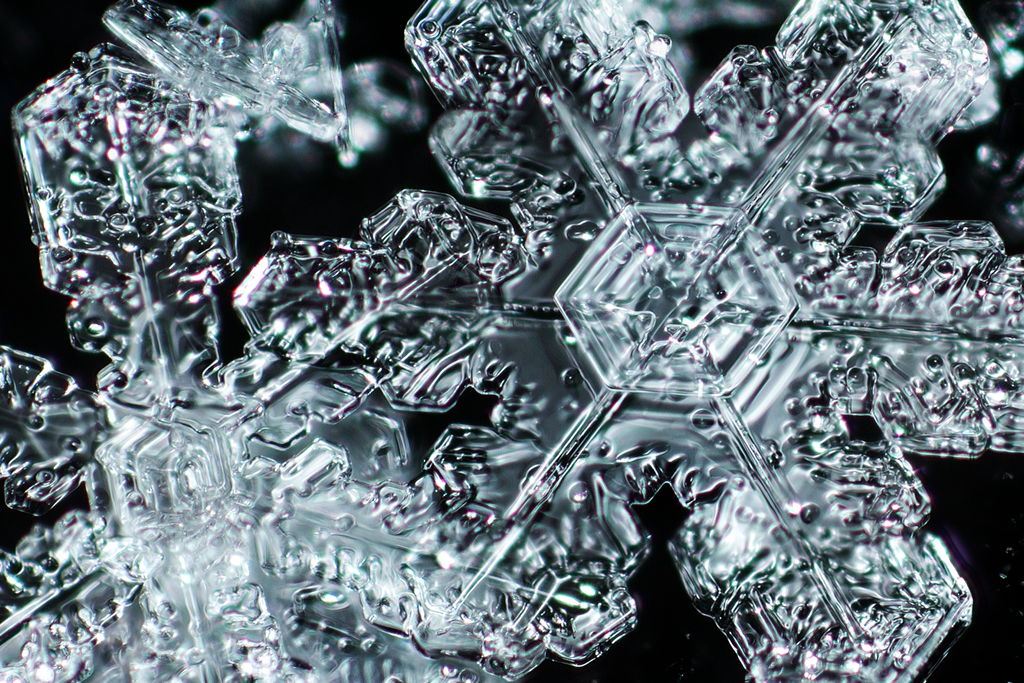|
Forum: Photographic Technique
04-15-2015, 07:09 AM
|
| |
That is a very nice and interesting image, the light pleasantly diffused but still with shape and shadow, showing off the textures. Looks like a good choice of aperture, and I don't think this calls for focus stacking -- you have good depth of field here.
|
|
Forum: Photographic Technique
04-07-2015, 04:08 AM
|
| |
The key to making flash look like natural light is direction and diffusion. (Color too, in some circumstances.) In macro it is easy to achieve broad diffusion because the subjects are small and the camera is close -- the diffusion only needs to be broad relative to the subject. Which is why even the pop-up flash can do well for macro. Put some kind of diffusing material between flash and subject -- this can be as cheap and simple as a piece of paper with a lens-sized hole in it. My review of one such diffuser has a couple of examples.
|
|
Forum: Photographic Technique
11-29-2014, 09:20 AM
|
| |
For snowflakes you need extreme (as I will call it) magnification, because a snowflake is typically only a few millimeters in diameter. Working distance is not an issue other than for lighting, and you probably want to light from the sides and/or back anyway, so not a problem.
Note that many of the snowflake photos on your search page are by Alexey Kljatov, using very modest equipment: a point and shoot with a reversed 58mm prime lens in front. Unless you want to buy the Canon MPE-65 (and, of course, a Canon body to go with it) you're going to have to do something similar to get this kind of magnification. Having experimented extensively with reversed lenses on bare extension vs. stacked onto another lens, I find that results are generally better with stacking (pace the conventional wisdom, which says that bare extension is better). A 28mm prime reversed onto something in the 100mm range will give you about the right magnification. Trying to take magnification higher than this with ordinary camera lenses doesn't actually get you additional detail, because of diffraction. For working with this kind of magnification you will definitely want to read up on diffraction, and how effective aperture varies with magnification.
Photographing live insects can be done with a similar rig (see John Hallmén), but only if they're not moving. Most insect photography (of live subjects in the field) is done at lower magnifications, and working distance (and lighting) become the primary problems. So for this kind of shooting you want a longer focal length macro lens. On the other hand, see Thomas Shahan for some different ideas about what is possible.
So, a couple of reasonable ways to approach this. Get a 100mm macro lens, which will give you a bit of working distance at 1:1 (not lots, but enough for some insects), and get an appropriate macro coupler and a 28mm lens to reverse onto it for the extreme magnification shots. Or, a bit cheaper, get an ordinary (non-macro) prime in the 100mm to 120mm range and some extension tubes, plus the macro coupler and 28mm lens. Or, buy a zoom such as the DA55-300 and the Raynox 250. I've never used that combination so you'll want to look into what magnification range and working distance this gets you, but this should give you some versatility. Or, this.
Here's an example of a snowflake shot with a reversed 28mm lens on extension:
 Snowflake by baro-nite, on Flickr Snowflake by baro-nite, on Flickr
And I know you said you aren't interested in flower macro, but there's lots of interesting stuff to be found in the plant world, and it doesn't fly away from you or melt while you're trying to photograph it:
 Spring Beauty Rust by baro-nite, on Flickr Spring Beauty Rust by baro-nite, on Flickr
Macro is fun and fascinating, so enjoy the journey.
|
|
Forum: Photographic Technique
11-28-2014, 02:21 PM
|
| |
The key is what you say here, "for what I need". Macro is a broad field. Some questions to consider:
What subject size(s) interest you particularly?
Can you manage with the lens very close to the subject, or do you need more working distance? This affects both lighting (if the working distance is small, the lens shadows many lighting angles) ability to get close without scaring away the subject (e.g., insects).
How do you intend to light the subject?
How important is using your camera's automatic exposure modes (vs. M mode)?
|











